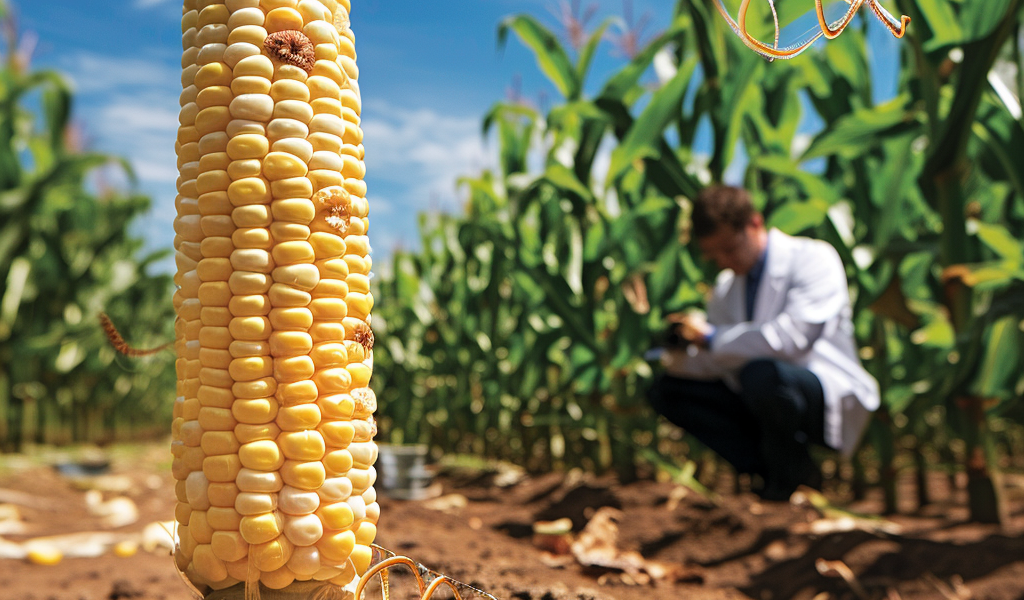In a groundbreaking study published in the Proceedings of the National Academy of Sciences, researchers from the University of Arizona have uncovered a novel genetic basis for pest resistance to genetically engineered crops, specifically targeting one of the most significant agricultural threats in the United States: the corn earworm, scientifically known as Helicoverpa zea. This discovery could have profound implications for the future of pest management and crop protection.
Insect pests, when left unchecked, pose a substantial risk to agricultural productivity, leading to devastating losses for farmers. To combat these pests, scientists have developed transgenic crops that produce proteins derived from the bacterium Bacillus thuringiensis (Bt). These proteins are designed to target specific insect pests while remaining harmless to humans and wildlife. However, the extensive cultivation of these biotech crops has resulted in some pests rapidly adapting to the Bt proteins, raising concerns about their long-term effectiveness.
The research team, led by senior author Bruce Tabashnik, who heads the Department of Entomology at the University of Arizona, employed advanced genomic techniques to explore the genetic mechanisms behind the corn earworm’s resistance to these transgenic crops. Surprisingly, they found that the resistance observed in field populations of the corn earworm was not linked to any of the 20 genes that had previously been identified as potential culprits for resistance. These genes had been dubbed ‘the usual suspects’ based on earlier studies involving lab-selected strains and resistant populations of other lepidopteran pests.
“The corn earworm is one of the world’s most challenging pests in terms of its ability to quickly evolve resistance in the field to genetically engineered crops. We identified 20 genes that harbor mutations conferring resistance to pest-killing proteins based on previous work with lab-selected strains of corn earworm as well as resistant field populations and lab strains of other lepidopteran pests,” stated Tabashnik. “Contrary to our expectations, in seeking the culprit for field-evolved resistance of corn earworm, none of the usual suspects were guilty.” This revelation highlights the complexity of pest evolution and the need for ongoing research to understand the genetic adaptations that enable these pests to survive against engineered defenses.
The implications of this study extend beyond the corn earworm. The findings underscore the adaptive nature of insect pests and the potential for other species to develop resistance to transgenic crops. As farmers increasingly rely on genetically engineered crops to manage pest populations, understanding the genetic basis of resistance will be crucial in developing more effective pest management strategies.
Bt crops have been widely adopted across the globe, cultivated in numerous countries and covering over a quarter of the world’s cropland. Their success is attributed to their targeted action against specific insect species, which contrasts sharply with conventional broad-spectrum insecticides that can harm beneficial insects and disrupt ecosystems. Bt proteins work by binding to specific receptors in the gut of targeted pests, leading to their demise, while remaining safe for non-target species, including humans.
The research conducted by the University of Arizona team emphasizes the necessity for continuous monitoring and research into pest resistance mechanisms. As pests evolve, so too must the strategies employed by farmers and scientists to combat them. This study serves as a reminder of the dynamic nature of agricultural ecosystems and the importance of integrating genetic research with practical pest management approaches.
In conclusion, as the agricultural landscape continues to evolve, the battle against pests will require innovative solutions backed by scientific research. The findings from this study not only shed light on the genetic factors contributing to pest resistance but also pave the way for future studies aimed at enhancing the resilience of crops against evolving pest threats.





